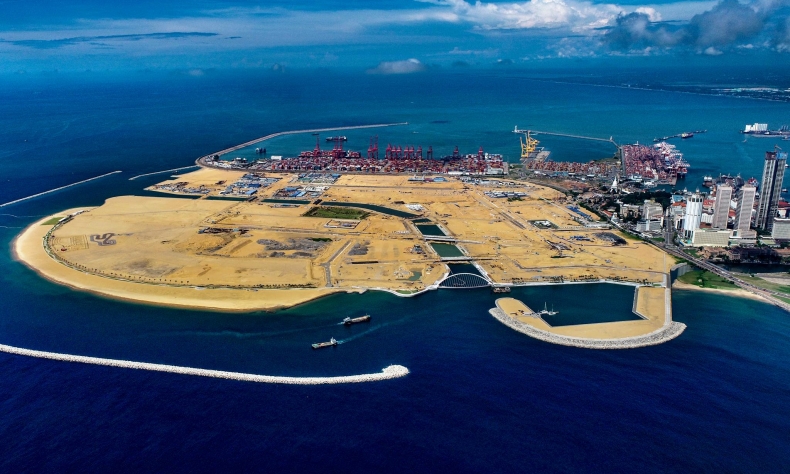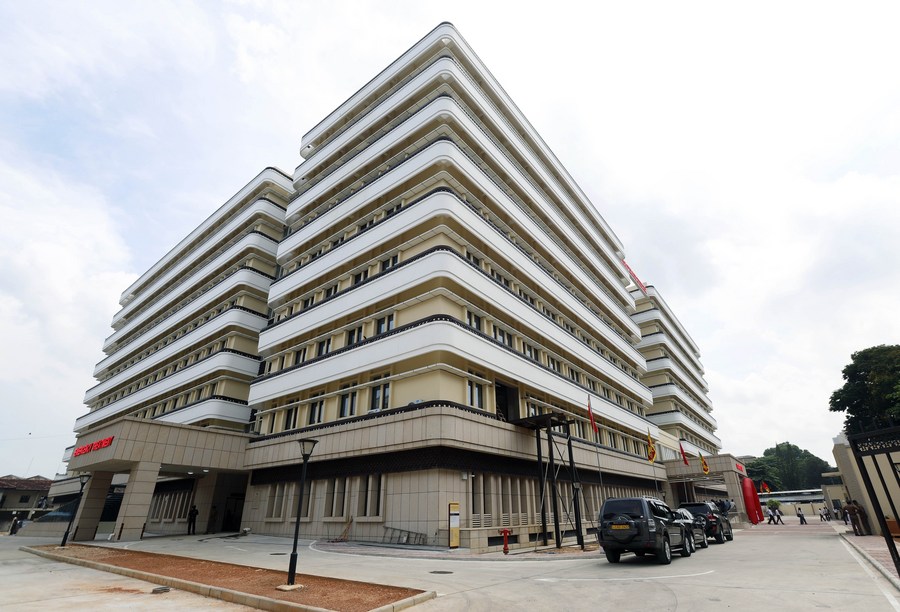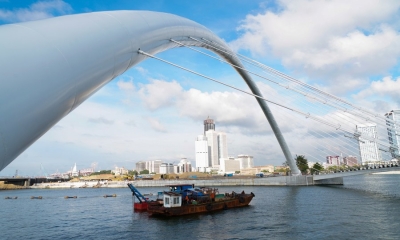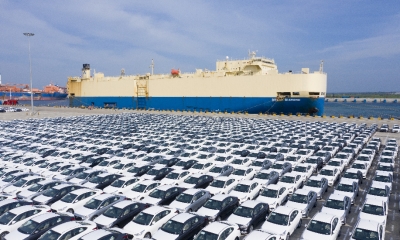China and Sri Lanka Carry Forward the Spirit of the Rubber-Rice Pact

As an active member of the BRI, it’s expected that the close cooperation with China will provide a significant boost to Sri Lanka’s economy through growth of trade, investments and job
opportunities.
Chinese President Xi Jinping met with Sri Lankan Prime Minister Dinesh Gunawardena in Beijing on March 27. During the meeting, President Xi said that China is willing to work with Sri Lanka to carry forward the spirit of the Rubber-Rice Pact, which is characterized by “independence, self-reliance, unity and mutual support,” to consolidate political mutual trust, enhance exchanges of experience in governance, expand practical cooperation, and advance the high-quality Belt and Road cooperation, especially that of the two flagship projects, the Colombo Port City and the Hambantota Port.
Sri Lanka became one of the first countries to openly support the Belt and Road Initiative (BRI) since it is highly compatible with Sri Lanka’s national development strategy. In partnership with the BRI, Sri Lanka commenced a series of development projects, leading to a huge overhaul of Sri Lankan infrastructure, which had been lagging for generations. These include the Colombo-Katunayake Expressway, Southern Expressway, Outer Circular Highway, Hambantota Port, Lakvijaya Power Plant, Colombo International Container Terminals (CICT), Colombo Lotus Tower – Telecommunication Tower, many water projects, etc.
Moreover, China also gifted and fully financed prominent landmarks such as the Bandaranaike Memorial International Conference Hall (BMICH), the Supreme Court Complex, Nelum Pokuna Theatre, National Nephrology Specialist Hospital, Outpatient building of Sri Lanka’s National Hospital, and Water Research Institute at the University of Peradeniya among others.
The BRI, which improves infrastructure and creates jobs in Sri Lanka, has immensely benefited Sri Lankan people. The ambitious Colombo Port City Development Project is also expected to bring long-term economic benefits to Sri Lanka. The Chinese enterprise Sinopec also plans to initiate work on its new refinery in Hambantota by June this year, which will make Sri Lanka an energy hub of the region. The Colombo International Container Terminals (CICT), one of the BRI projects, has contributed positively to Sri Lanka’s economy, which has allowed the Colombo port to grow at a rapid pace.

During the meeting, President Xi also assured that China would continue to provide due assistance within its capacity for Sri Lanka’s economic and social development. Furthermore, China will continue to import more high-quality specialty products from Sri Lanka and encourage more Chinese enterprises to invest and do business in the country.
Before the meeting with President Xi, Prime Minister Gunawardena met Chinese Premier Li Qiang. During the meeting, Premier Li said China would extend assistance to develop Katunayake International Airport. A Japanese-funded expansion of the second terminal of the Katunayake Airport had been on hold since Sri Lanka’s sovereign debt default.
Sri Lanka is on a gradual upward trend from the worst socio-economic crisis, with an ambition to elevate economic growth to 5 percent by 2025. It is also set to transit the country towards an export-based economy.
Sri Lanka is also renewing its focus on trade deals to foster economic growth and help its battered economy that will open up new markets for Sri Lankan businesses, contributing directly to the nation’s economic growth. Sri Lanka has signed Free Trade Agreements (FTAs) with India, Pakistan, and Singapore and recently an FTA has been signed with Thailand. In addition, the island nation also plans to establish FTAs with China, Indonesia, Malaysia, and Vietnam by the end of 2024.
Sri Lanka has started FTA negotiations with China virtually after a temporary halt. Both countries had already held seven rounds of negotiations till 2018. The China-Sri Lanka FTA will be a comprehensive agreement covering trade in goods, trade in services, investment, and economic and technological cooperation.
In recent years, the bilateral trade between China and Sri Lanka has continued to grow and China has become one of Sri Lanka’s largest trading partners. In 2022, China is the 12th export destination for Sri Lanka. The total export value from Sri Lanka to China was $253.11 million in 2022 and total imports from China to Sri Lanka for the same period were $3,523.00 million.
China’s willingness to import more high-quality specialty products from Sri Lanka is a positive development. This presents Sri Lankan businesses with ample opportunities to connect with the huge Chinese market which has high economic growth and an expanding middle class with more purchasing power and a desire for imported products.
Furthermore, it’s inspiring to see China will encourage Chinese investors and entrepreneurs to invest and do business in Sri Lanka. This will promote the development, diversification and wider market access of Sri Lankan products to the global market.
Sri Lanka and China are traditional friendly countries with relations dating back many centuries. Sri Lanka also played an active role in the ancient maritime Silk Road. With concerted efforts, the bilateral ties have entered into a new era of strategic cooperative partnership.
As an active member of the BRI, it’s expected that the close cooperation with China will provide a significant boost to Sri Lanka’s economy through growth of trade, investments and job opportunities.
The article reflects the author’s opinions, and not necessarily the views of China Focus.
 Facebook
Facebook
 Twitter
Twitter
 Linkedin
Linkedin
 Google +
Google +





